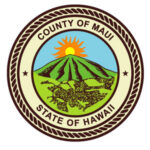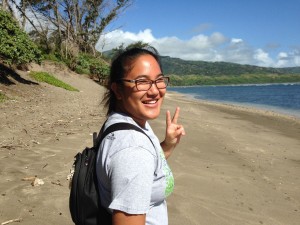
Jun 18, 2014 | Environment, Sustainability
 Baldwin High School student Chelsea Kau got up close and personal with marine life on a recent Maui Youth Alliance excursion to visit the Waihee Beach Park with Department of Land and Natural Resources staff and learn about ocean safety. The best part of the visit “was when I got to cut a hole in a fish to feel for the cavity in its belly, and then suture the fish,” the 15-year-old Wailuku resident said.
Baldwin High School student Chelsea Kau got up close and personal with marine life on a recent Maui Youth Alliance excursion to visit the Waihee Beach Park with Department of Land and Natural Resources staff and learn about ocean safety. The best part of the visit “was when I got to cut a hole in a fish to feel for the cavity in its belly, and then suture the fish,” the 15-year-old Wailuku resident said.
Kau said she gained an appreciation of the impact humans are having on the ocean and its sea life. Overfishing may be one of the biggest problems contributing to fewer fish in the ocean, she said. “But, it’s also because of these other land factors such as sewage pumps and humans stepping on the coral reefs, etcetera. But the only thing that can be controlled right now, is the overfishing.” Kau, who has participated in the Youth Alliance for two years, advocated for diving and fishing for subsistence only. “That’s the way it should be, because you don’t need 10 or 15 fish for a family of three or four,” she said. “Take what you need.” After visiting marine resource officials, Kau said she believes shark attacks are “more than likely” caused by debris that has floated to the Hawaiian Islands from the earthquake and tsunami that devastated Japan on March 11, 2011.
Kau said she believes ocean safety is a challenge: “It’s ‘something you can’t control’ as ‘Mother Nature is unpredictable.’ But because we have lifeguards and all of the land emergency services, they’re saving the lives of people who don’t know our currents and tides,” she said. Youth Alliance members attend monthly events during the school year to explore and gain a greater understanding of key components in the Maui community. The Maui Economic Development Board coordinates the group’s gatherings.
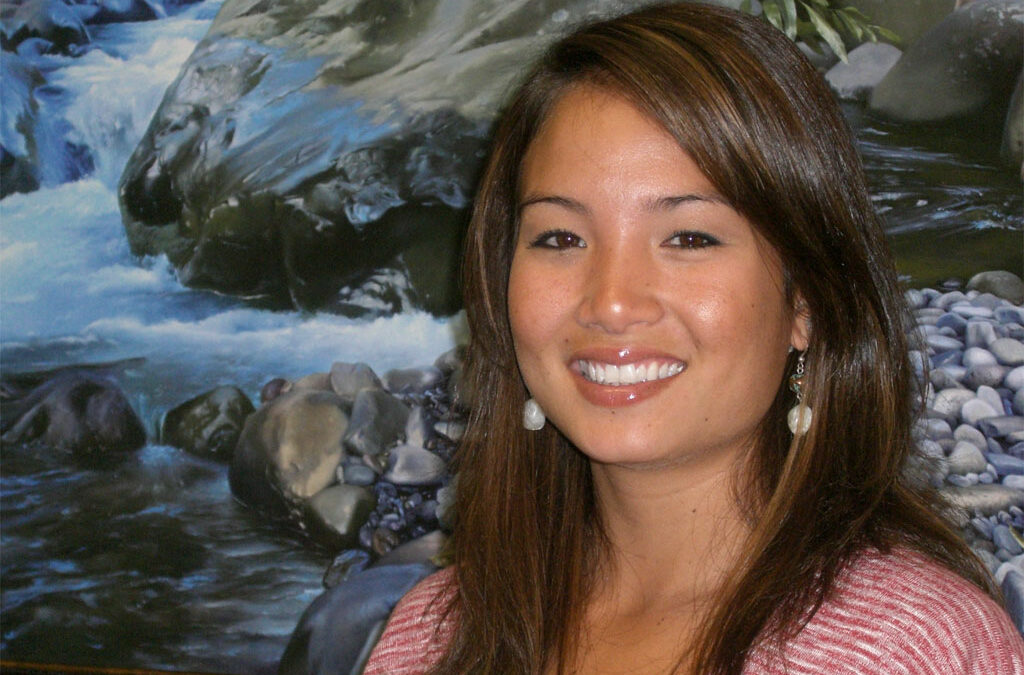
Mar 5, 2014 | Environment
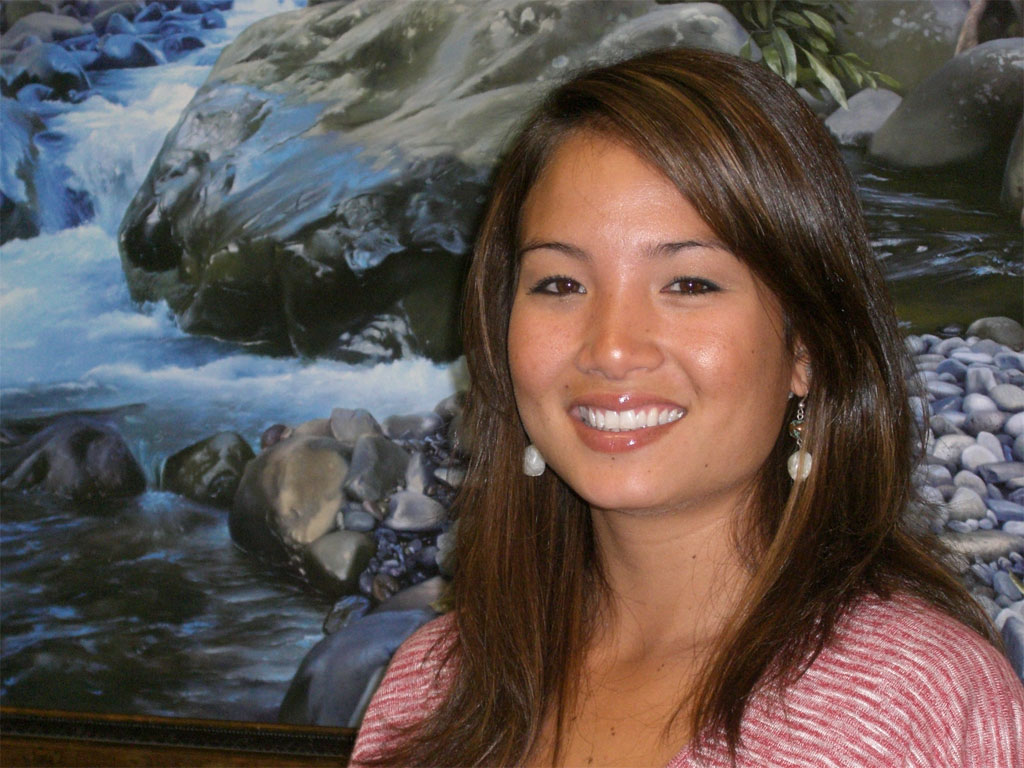 An environmental engineer is giving back by encouraging young girls to think about the possibilities in their future. Audrey Chihara, a 2004 Lahainaluna High School graduate, has been participating as a mentor in Introduce a Girl to Engineering Day since graduating with her own degree in environmental engineering. “I tell girls all the time I didn’t even know I could major in engineering,” Chihara said, following a visit by Kihei Charter School 7th- and 8th-graders at her firm, Brown and Caldwell in Wailuku. Chihara and her colleague, Irina Constantinescu, were amongst 24 engineers in Maui County who served as mentors and gave middle schoolers a peek into their careers.
An environmental engineer is giving back by encouraging young girls to think about the possibilities in their future. Audrey Chihara, a 2004 Lahainaluna High School graduate, has been participating as a mentor in Introduce a Girl to Engineering Day since graduating with her own degree in environmental engineering. “I tell girls all the time I didn’t even know I could major in engineering,” Chihara said, following a visit by Kihei Charter School 7th- and 8th-graders at her firm, Brown and Caldwell in Wailuku. Chihara and her colleague, Irina Constantinescu, were amongst 24 engineers in Maui County who served as mentors and gave middle schoolers a peek into their careers.
“We showed them there are a lot of different areas in engineering that they could get into, if they’re interested,” Chihara said. After graduating from high school, Chihara said she was unsure about what she wanted to study until she enrolled in Maui Economic Development Board’s Women in Technology program. She landed an internship at Hawaiian Telcom and made a connection with Brown and Caldwell where she’s been employed for about five years now.
Chihara recommends that young people interested in the field of science, engineering and technology enroll in plenty of science and math courses in high school and college. “Even if they don’t end up with a career, it’s really going to help them down the road,” she said.
As a mother of a three-year-old, Chihara said her career “provides a pretty good work and life balance.” She said the average engineer gets paid between $50,000 and $60,000 at her first job. After fielding questions and chatting with the Kihei middle schoolers, Chihara said she was grateful for the opportunity. “I get really excited for them. You can just tell that the wheels are turning, the light bulbs are lighting up and they’re really thinking about it.”
Maui Economic Development Board coordinates Introduce a Girl to Engineering Day, a nationally recognized event held annually during National Engineering Week. This year’s program drew nearly 50 middle school students in public and private schools on Maui and Lanai.
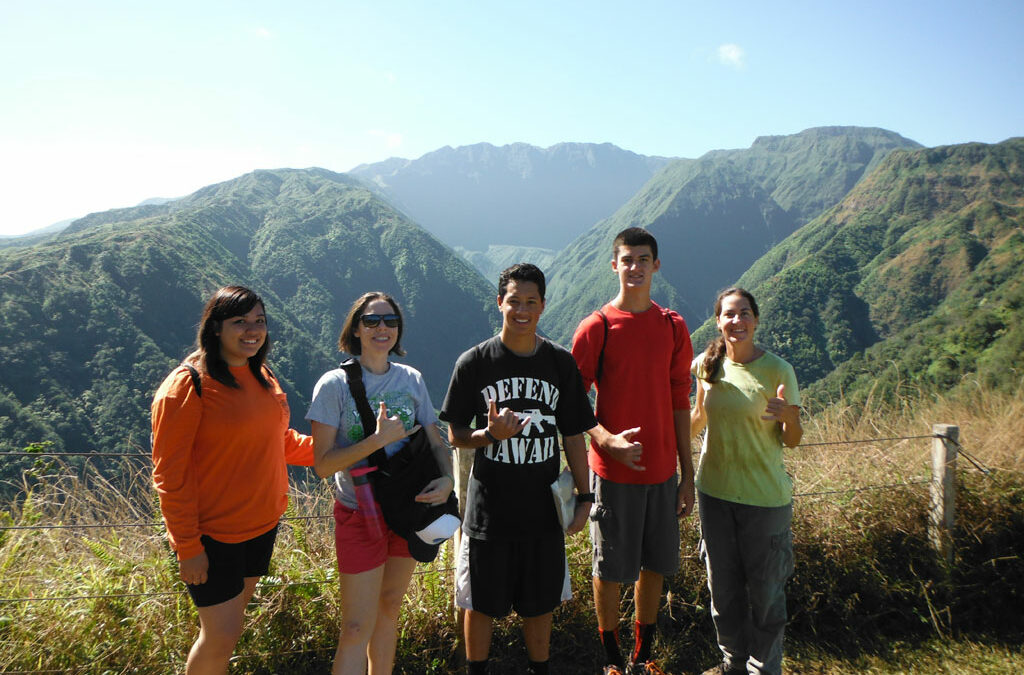
Feb 5, 2014 | Environment
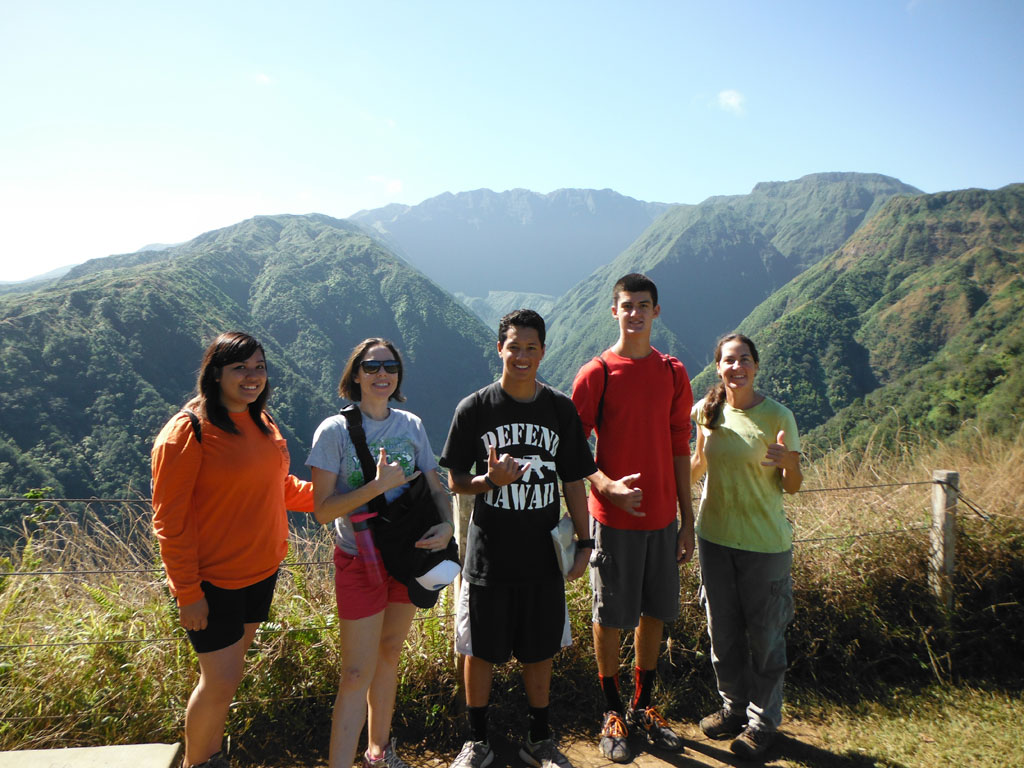 Maui High School junior Daniel Fonseca saw up close how invasive plants and animals have been having an adverse impact on the West Maui Watershed. “We mostly learned about the invasive strawberry guava trees because they have become one of the biggest threats to the native plants,” he said after a recent Maui Economic Development Board Youth Alliance trip to the environmentally sensitive watershed. “Strawberry guavas are strong, and they grow very quickly so they aren’t giving much of a chance to the koa or ohia trees to grow.”
Maui High School junior Daniel Fonseca saw up close how invasive plants and animals have been having an adverse impact on the West Maui Watershed. “We mostly learned about the invasive strawberry guava trees because they have become one of the biggest threats to the native plants,” he said after a recent Maui Economic Development Board Youth Alliance trip to the environmentally sensitive watershed. “Strawberry guavas are strong, and they grow very quickly so they aren’t giving much of a chance to the koa or ohia trees to grow.”
Fonseca said his favorite part of the tour was helping the West Maui Mountains Watershed Partnership remove approximately 200 strawberry guava trees in the forest. The Watershed’s Natural Resource/GIS Technician Jill LaBram said the strawberry guavas, a non-native species, forms monotypic stands where nothing else can grow and it uses up much more water than native plants. LaBram said the Youth Alliance support was important to the nonprofit’s attempts to re-establish the native forest along the Waihe’e Ridge trail. “Every little bit helps,” she said. Fonseca credited watershed personnel for how well they’re preserving Hawaii’s native forests. “What they’re doing is pretty important because without them the forests that once made Hawaii unique would be completely taken over by invasive plant species,” he said.
The West Maui Mountains Watershed Partnership has a staff of seven to 10 people, based in Lahaina, who work to protect West Maui’s native forest that supplies much of Maui with clean, fresh water. LaBram said the Watershed offers volunteers service trips for individuals as well as school and community groups. Call 661-6600, or e-mail: outreach@westmauiwatershed.org. Youth Alliance members attend monthly events during the school year to explore and gain a greater understanding of key components in the Maui community. Their gatherings are coordinated by MEDB.
Jan 29, 2014 | Environment, Events, Small Business

DougMcLeod, County of Maui Energy Commissioner
What will future consumers want and expect from their utility? That is just one question Hawaii leaders and others across the country are expected to tackle at the upcoming conference: “Electric Utilities: The Future Is Not What It Used To Be.” The event scheduled for March 26-28 at the Maui Arts & Cultural Center comes at a time when Hawaii is experiencing an unprecedented wave of growth in solar and wind generation. The gathering will provide a forum for open and frank discussions about the rapidly changing energy landscape and its implications for power utilities, policymakers and consumers.
The County of Maui and the Maui Economic Development Board are presenting the conference with the support of numerous partners. County of Maui Energy Commissioner Doug McLeod asks: “The traditional investor-owned utility model has worked in the past, but will it be the right model for tomorrow’s electric utility?” McLeod said he hopes the conference will bring new faces and ideas to Hawaii from Japan and the Mainland. MEDB President and CEO Jeanne Skog said she and her agency are pleased to partner in the event. “As Maui County continues to move aggressively toward clean energy goals, this dialogue will contribute to creating a new template for how utilities will best serve our residents,” Skog said.
McLeod said open and frank discussions are important to understanding the impact renewable energy alternatives are having on electricity usage and electric rates. Conference organizers have confirmed keynote presentations from Hunter Lovins, president of Natural Capitalism Solutions, and Ron Binz, former chief of the Colorado Public Utilities Commission. The conference also expects to spur discussions on other questions, including: what are the key drivers shifting today’s energy paradigm; how can states achieve a mix of clean energy to satisfy all stakeholders; and what are the key elements of a 21st century energy utility business model.
To learn more, go to www.hightechmaui.com/energyconference.
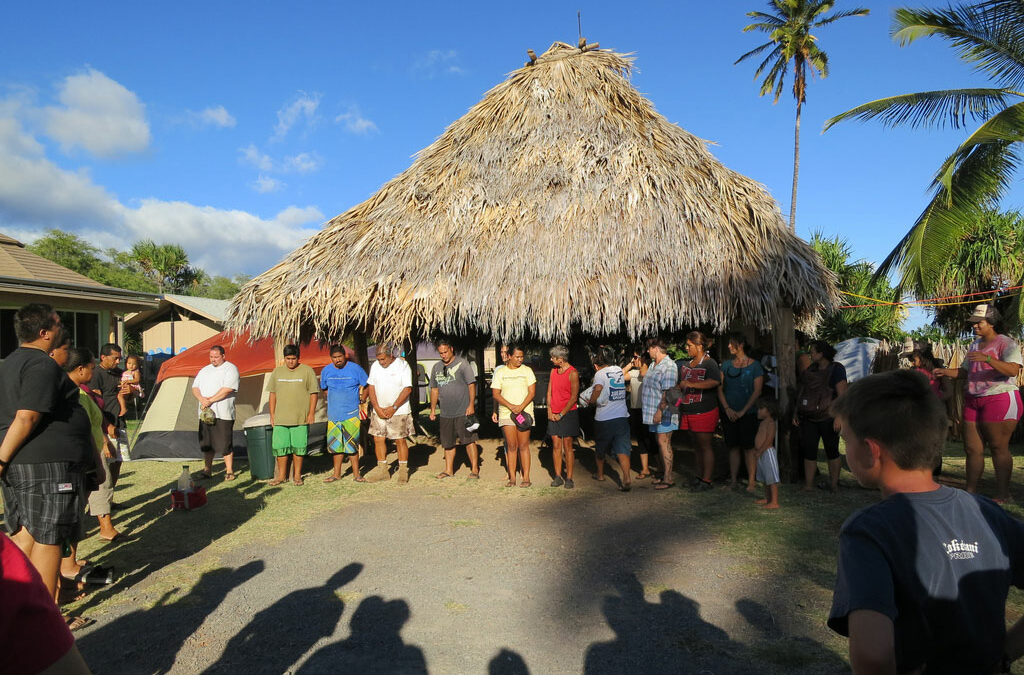
Dec 18, 2013 | Education, Environment, Sustainability
 Ka Honua Momona means “abundant Earth,” and a Molokai nonprofit of that name is reawakening the fertile Friendly Isle through the restoration of ancient Hawaiian fishponds on the island’s south shore. “Molokai was once known as the breadbasket of the islands due to the momona (abundance) of the land and sea,” said Kauwila Hanchett, the nonprofit’s executive director. “We believe Molokai can return to momona and become a model of sustainability for others.”
Ka Honua Momona means “abundant Earth,” and a Molokai nonprofit of that name is reawakening the fertile Friendly Isle through the restoration of ancient Hawaiian fishponds on the island’s south shore. “Molokai was once known as the breadbasket of the islands due to the momona (abundance) of the land and sea,” said Kauwila Hanchett, the nonprofit’s executive director. “We believe Molokai can return to momona and become a model of sustainability for others.”
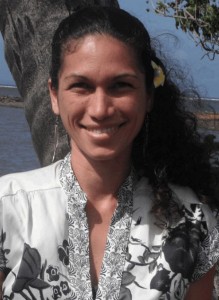
In fact, “sustainability is at the heart of all we do,” Hanchett said. “We are driven by our passion to ensure that the natural and cultural beauty of Molokai remains vibrant and strong for future generations.” Rooted in sustainability, the group is also actively engaged with nurturing young people, she said. “Training young people to become leaders through year-round and summer internships, as well as working with youth of all ages through our environmental education programs is an important part of our strategy to ensure that the resources we care for today continue to be protected in perpetuity,” Hanchett explained.
The nonprofit has 14 staff members and volunteers forming its “core team,” Hanchett said. Local school and community groups also donate more than 10,000 hours of service annually to fishpond restoration. “Together, we are removing invasive species, rebuilding the ancient rock walls surrounding the pond, and restoring the momona of Alii and Kalokoeli fishponds,” she said. The group carries out its work with five core principles: hoewe, or cultural rootedness; kahu hoilina, environmental stewardship; kuka’I ka ha, deep sharing; ka ‘imi ‘ike, lifelong learning; and mahuaola, health and well-being, Hanchett said.
Ka Honua Momona hosts Community Work Days on the third Saturday of each month. For more information, call (808) 553-8353 or visit the nonprofit’s website at www.kahonuamomona.org.
Sidebar quote
“Sustainability is at the heart of all we do.”
Kauwila Hanchett, Ka Honua Momona Executive Director
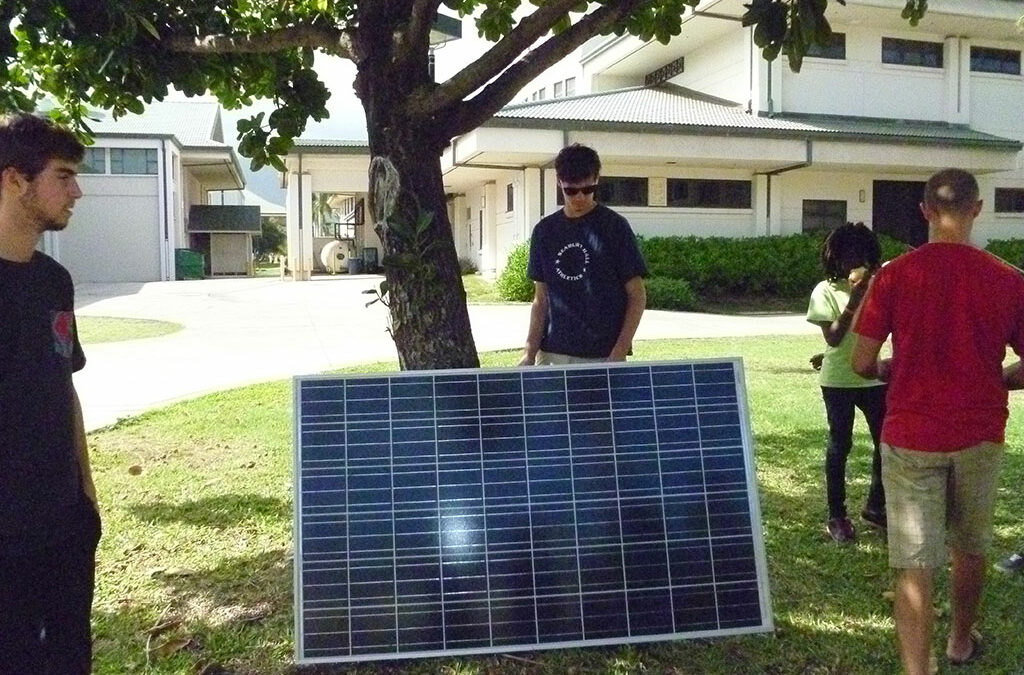
Nov 27, 2013 | Environment, Sustainability
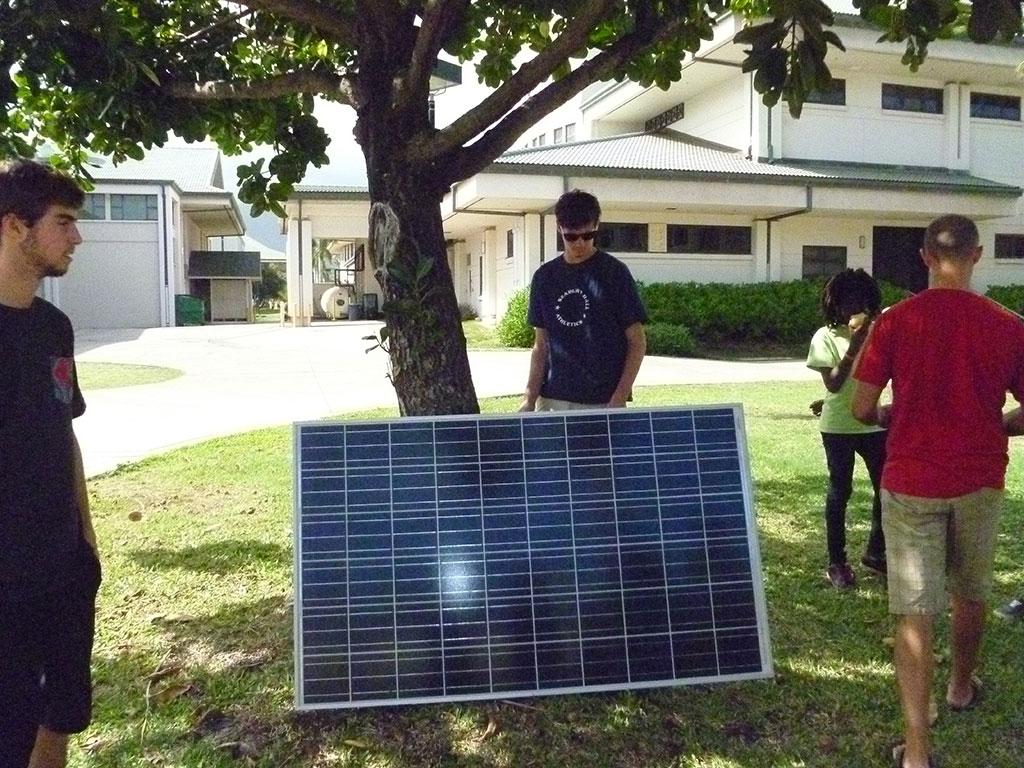 With the goal of exploring Maui’s infrastructure needs, the Youth Alliance launched this school year by focusing their time and talk on energy and electricity. “I would like to spark creativity in the students to come up with innovative solutions to current and future infrastructure challenges,” said Willow Krause, Maui Economic Development Board’s Youth Alliance Coordinator. High schoolers in the Youth Alliance took tours through Maui Electric Co., the University of Hawaii Maui College campus and were oriented to how solar panels work.
With the goal of exploring Maui’s infrastructure needs, the Youth Alliance launched this school year by focusing their time and talk on energy and electricity. “I would like to spark creativity in the students to come up with innovative solutions to current and future infrastructure challenges,” said Willow Krause, Maui Economic Development Board’s Youth Alliance Coordinator. High schoolers in the Youth Alliance took tours through Maui Electric Co., the University of Hawaii Maui College campus and were oriented to how solar panels work.
Presentations and discussions covered general sustainability issues from energy efficiency to recycling to carbon footprints. Youth Alliance members Chelsea Kau and Kaitlyn Yamada were intrigued by what they learned about a carbon footprint – the amount of greenhouse emissions a person’s lifestyle choices produce and contribute to overall climate change. It is usually expressed in equivalent tons of carbon dioxide. “I learned a lot about people’s carbon footprint and how a lot of what you do adds to your carbon footprint,” Yamada said. “This has taught me to be very mindful of what I do, like driving around and even simply just drinking from a water bottle,” she added. Kau said she’s become more aware of the effects of energy consumption. “I definitely believe that the world needs to be more intuitive about the energy decisions we make as a whole. We are slowing running out of fossil fuel, which has been running the world for ages,” she said.
 Youth Alliance members attend monthly events during the school year to explore and gain a greater understanding of key components in the Maui community. Their gatherings are coordinated by the MEDB, and often include a community service project. “I think that on Maui we are all very aware of the energy issues and are doing our best to adapt to a new way that is more sustainable for us,” Yamada said.
Youth Alliance members attend monthly events during the school year to explore and gain a greater understanding of key components in the Maui community. Their gatherings are coordinated by the MEDB, and often include a community service project. “I think that on Maui we are all very aware of the energy issues and are doing our best to adapt to a new way that is more sustainable for us,” Yamada said.
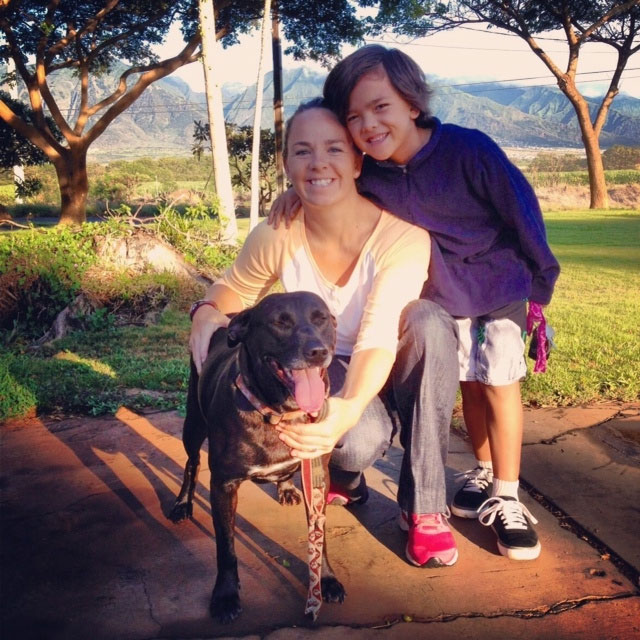
Oct 9, 2013 | Environment
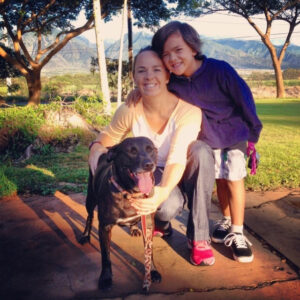
An animal lover, Jenny Mida volunteers at the Maui Humane Society. She walks dogs, bakes dog treats for fundraisers and helps educate the public about pet adoption and the importance of spaying and neutering dogs and cats. “My motivation for doing these things is that I love all animals, and I want to do whatever I can to improve their lives and well being,” said Mida, an educational assistant at King Kekaulike High School.
The Kula resident is married and has a son, and her extended family includes three dogs – Kalea, a French mastiff; Thor, a pitbull mix; and Bernardo, an Airedale terrier. Pets can be healthy and happy if they’re made part of the family, she said. “A life lived on a chain outside is a life of misery. Play with, walk and socialize your pet with people and animals when they are growing up so they are comfortable around everyone.” When she volunteers at the Puunene shelter, Mida takes her son with her. “I think it’s important for kids to learn to care for and love all creatures, so I bring Zander along,” she said. “This is probably my favorite thing to do because the dogs are so appreciative and it’s fun to play, snuggle and get to know each dog individually. I take pictures of the dogs during our walks that I post on Instagram and Facebook with info in hopes someone will see one (or two) and they just have to adopt.”
She urges all dog and cat owners to sterilize their pets to help stop the island’s population explosion of unwanted, feral animals. The Humane Society and Society for the Prevention of Cruelty to Animals Maui offer discounted spays and neuters. “It just takes one call to set up an appointment,” she said. “Spays and neuters also can decrease unwanted behaviors and reduce the risk of certain cancers.” Armed with the mission to save the lives of unwanted pets, the Humane Society has been operating as an animal shelter since 1987. For more information, call 877-3680, ext. 14, or e-mail: volunteer@mauihumanesociety.org.

Sep 11, 2013 | Environment, Events, Small Business

Physical scientist Stacie Williams thrives on learning the latest developments in her field at the annual Advanced Maui Optical and Space Surveillance (AMOS) Technologies Conference presented by Maui Economic Development Board. She especially enjoys a conference feature that offers a day of hands-on science activities for youngsters. “Their engagement is our motivation,” said Williams, a program manager who oversees educational outreach projects for the Air Force Research Laboratory. The lab is actively participating in this week’s AMOS conference at the Wailea Beach Marriott. An international assembly of space situational awareness experts has gathered for events that provide technical interchange on a variety of space-related technologies. In addition to technical sessions, participants are attending a special Space Policy Forum to hear current issues and trends in national and international policies that have impacts on their work.
For Williams, one of the highlights of the conference is welcoming hundreds of Maui youngsters to the conference venue. The students are given an opportunity to learn about space situational awareness topics by engaging in varied activities from viewing celestial bodies through a telescope to maneuvering hand-held spectrometers to determine characteristics of objects in space. The Air Force Research Laboratory’s partners with MEDB in association with the University of Hawaii Institute for Astronomy, the Maui High Performance Center, Pacific Defense Solutions, and the Boeing Company for the student day activities. “Every year our student activities get more complex and more engaging,” said Williams, who has helped to coordinate the activities for the last four years. “Everybody has embraced this and I think we just get better every year.”
Williams said she’s received overwhelming, positive feedback from scientists and other space situational awareness experts about including students at AMOS. “Bringing in the youth education element provides a wonderful synergy, a rare opportunity that more technical conferences should exploit since we are losing leadership in scientists and engineers to the rest of the world,” a senior project engineer wrote. Williams hopes that the student activities will inspire some of them to consider a career in science and technology. “We really need to get more young people interested.”

Jun 19, 2013 | Environment
 The Maui Huliau Foundation uses fun in filmmaking to get young people interested and educated in environmental issues. “This is just a cool way to tell stories and learn about what’s going on around us,” said Malia Cahill, the foundation’s president and founder. First started in 2010, Maui Huliau Foundation programs are open to students in grades 7 to 12. Cahill said she encourages students to take a neutral stance and learn through their filmmaking all the facts surrounding a specific environmental issue. “In teaching teenagers not to take sides, they can learn best by educating themselves about the environment,” she said.
The Maui Huliau Foundation uses fun in filmmaking to get young people interested and educated in environmental issues. “This is just a cool way to tell stories and learn about what’s going on around us,” said Malia Cahill, the foundation’s president and founder. First started in 2010, Maui Huliau Foundation programs are open to students in grades 7 to 12. Cahill said she encourages students to take a neutral stance and learn through their filmmaking all the facts surrounding a specific environmental issue. “In teaching teenagers not to take sides, they can learn best by educating themselves about the environment,” she said.
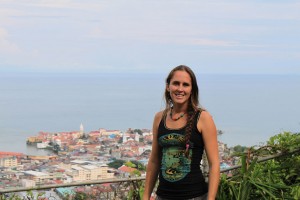 The program’s students have traveled to film festivals in Honolulu and California, raising awareness about environmental issues on Maui. Through its YouTube channel, the student films have attracted almost 7,000 hits, according to the foundation. Cahill, a 2001 Seabury Hall graduate who grew up in Kula, said she started the foundation three years ago with the goal of getting teenagers interested in environmental issues. Filmmaking and story telling became the means to interest them in learning about their environment. The Filmmaking Club was formed first with 12 students. Now Maui Huliau Foundation has up to 40 students participating in three separate programs — one on film, another on service learning and watersheds; and the third on leadership and environmental projects. “It’s got its own life and momentum, I couldn’t stop it even if I wanted to,” Cahill said.
The program’s students have traveled to film festivals in Honolulu and California, raising awareness about environmental issues on Maui. Through its YouTube channel, the student films have attracted almost 7,000 hits, according to the foundation. Cahill, a 2001 Seabury Hall graduate who grew up in Kula, said she started the foundation three years ago with the goal of getting teenagers interested in environmental issues. Filmmaking and story telling became the means to interest them in learning about their environment. The Filmmaking Club was formed first with 12 students. Now Maui Huliau Foundation has up to 40 students participating in three separate programs — one on film, another on service learning and watersheds; and the third on leadership and environmental projects. “It’s got its own life and momentum, I couldn’t stop it even if I wanted to,” Cahill said.
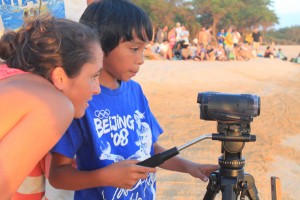 This month, the students premiered 11 films exploring a variety of environmental issues. They planned, directed and edited their films during an after-school program held at the Hawaiian Canoe Club hale on Kaahumanu Avenue in Kahului. Students from 13 different Maui schools presented their work to a sold-out crowd at Iao Theater. Topics range from the plight of the endangered Hawksbill turtle to a reality-style documentary about eating locally-grown food. A “Hana Hou” showing is set for 6:30 p.m. Thursday at the Seabury Hall Creative Arts Center. The event is free, however, donations of any amount will be accepted at the door. For more information, visit: www.mauihuliaufoundation.org
This month, the students premiered 11 films exploring a variety of environmental issues. They planned, directed and edited their films during an after-school program held at the Hawaiian Canoe Club hale on Kaahumanu Avenue in Kahului. Students from 13 different Maui schools presented their work to a sold-out crowd at Iao Theater. Topics range from the plight of the endangered Hawksbill turtle to a reality-style documentary about eating locally-grown food. A “Hana Hou” showing is set for 6:30 p.m. Thursday at the Seabury Hall Creative Arts Center. The event is free, however, donations of any amount will be accepted at the door. For more information, visit: www.mauihuliaufoundation.org

 Baldwin High School student Chelsea Kau got up close and personal with marine life on a recent Maui Youth Alliance excursion to visit the Waihee Beach Park with Department of Land and Natural Resources staff and learn about ocean safety. The best part of the visit “was when I got to cut a hole in a fish to feel for the cavity in its belly, and then suture the fish,” the 15-year-old Wailuku resident said.
Baldwin High School student Chelsea Kau got up close and personal with marine life on a recent Maui Youth Alliance excursion to visit the Waihee Beach Park with Department of Land and Natural Resources staff and learn about ocean safety. The best part of the visit “was when I got to cut a hole in a fish to feel for the cavity in its belly, and then suture the fish,” the 15-year-old Wailuku resident said.


 Maui High School junior Daniel Fonseca saw up close how invasive plants and animals have been having an adverse impact on the West Maui Watershed. “We mostly learned about the invasive strawberry guava trees because they have become one of the biggest threats to the native plants,” he said after a recent
Maui High School junior Daniel Fonseca saw up close how invasive plants and animals have been having an adverse impact on the West Maui Watershed. “We mostly learned about the invasive strawberry guava trees because they have become one of the biggest threats to the native plants,” he said after a recent 

 Ka Honua Momona means “abundant Earth,” and a Molokai nonprofit of that name is reawakening the fertile Friendly Isle through the restoration of ancient Hawaiian fishponds on the island’s south shore. “Molokai was once known as the breadbasket of the islands due to the momona (abundance) of the land and sea,” said Kauwila Hanchett, the nonprofit’s executive director. “We believe Molokai can return to momona and become a model of sustainability for others.”
Ka Honua Momona means “abundant Earth,” and a Molokai nonprofit of that name is reawakening the fertile Friendly Isle through the restoration of ancient Hawaiian fishponds on the island’s south shore. “Molokai was once known as the breadbasket of the islands due to the momona (abundance) of the land and sea,” said Kauwila Hanchett, the nonprofit’s executive director. “We believe Molokai can return to momona and become a model of sustainability for others.”

 With the goal of exploring Maui’s infrastructure needs, the Youth Alliance launched this school year by focusing their time and talk on energy and electricity. “I would like to spark creativity in the students to come up with innovative solutions to current and future infrastructure challenges,” said Willow Krause, Maui Economic Development Board’s Youth Alliance Coordinator. High schoolers in the Youth Alliance took tours through Maui Electric Co., the University of Hawaii Maui College campus and were oriented to how solar panels work.
With the goal of exploring Maui’s infrastructure needs, the Youth Alliance launched this school year by focusing their time and talk on energy and electricity. “I would like to spark creativity in the students to come up with innovative solutions to current and future infrastructure challenges,” said Willow Krause, Maui Economic Development Board’s Youth Alliance Coordinator. High schoolers in the Youth Alliance took tours through Maui Electric Co., the University of Hawaii Maui College campus and were oriented to how solar panels work. Youth Alliance
Youth Alliance



 The Maui Huliau Foundation uses fun in filmmaking to get young people interested and educated in environmental issues. “This is just a cool way to tell stories and learn about what’s going on around us,” said Malia Cahill, the foundation’s president and founder. First started in 2010, Maui Huliau Foundation programs are open to students in grades 7 to 12. Cahill said she encourages students to take a neutral stance and learn through their filmmaking all the facts surrounding a specific environmental issue. “In teaching teenagers not to take sides, they can learn best by educating themselves about the environment,” she said.
The Maui Huliau Foundation uses fun in filmmaking to get young people interested and educated in environmental issues. “This is just a cool way to tell stories and learn about what’s going on around us,” said Malia Cahill, the foundation’s president and founder. First started in 2010, Maui Huliau Foundation programs are open to students in grades 7 to 12. Cahill said she encourages students to take a neutral stance and learn through their filmmaking all the facts surrounding a specific environmental issue. “In teaching teenagers not to take sides, they can learn best by educating themselves about the environment,” she said. The program’s students have traveled to film festivals in Honolulu and California, raising awareness about environmental issues on Maui. Through its
The program’s students have traveled to film festivals in Honolulu and California, raising awareness about environmental issues on Maui. Through its  This month, the students premiered 11 films exploring a variety of environmental issues. They planned, directed and edited their films during an after-school program held at the Hawaiian Canoe Club hale on Kaahumanu Avenue in Kahului. Students from 13 different Maui schools presented their work to a sold-out crowd at Iao Theater. Topics range from the plight of the endangered Hawksbill turtle to a reality-style documentary about eating locally-grown food. A “Hana Hou” showing is set for 6:30 p.m. Thursday at the Seabury Hall Creative Arts Center. The event is free, however, donations of any amount will be accepted at the door. For more information, visit:
This month, the students premiered 11 films exploring a variety of environmental issues. They planned, directed and edited their films during an after-school program held at the Hawaiian Canoe Club hale on Kaahumanu Avenue in Kahului. Students from 13 different Maui schools presented their work to a sold-out crowd at Iao Theater. Topics range from the plight of the endangered Hawksbill turtle to a reality-style documentary about eating locally-grown food. A “Hana Hou” showing is set for 6:30 p.m. Thursday at the Seabury Hall Creative Arts Center. The event is free, however, donations of any amount will be accepted at the door. For more information, visit: 